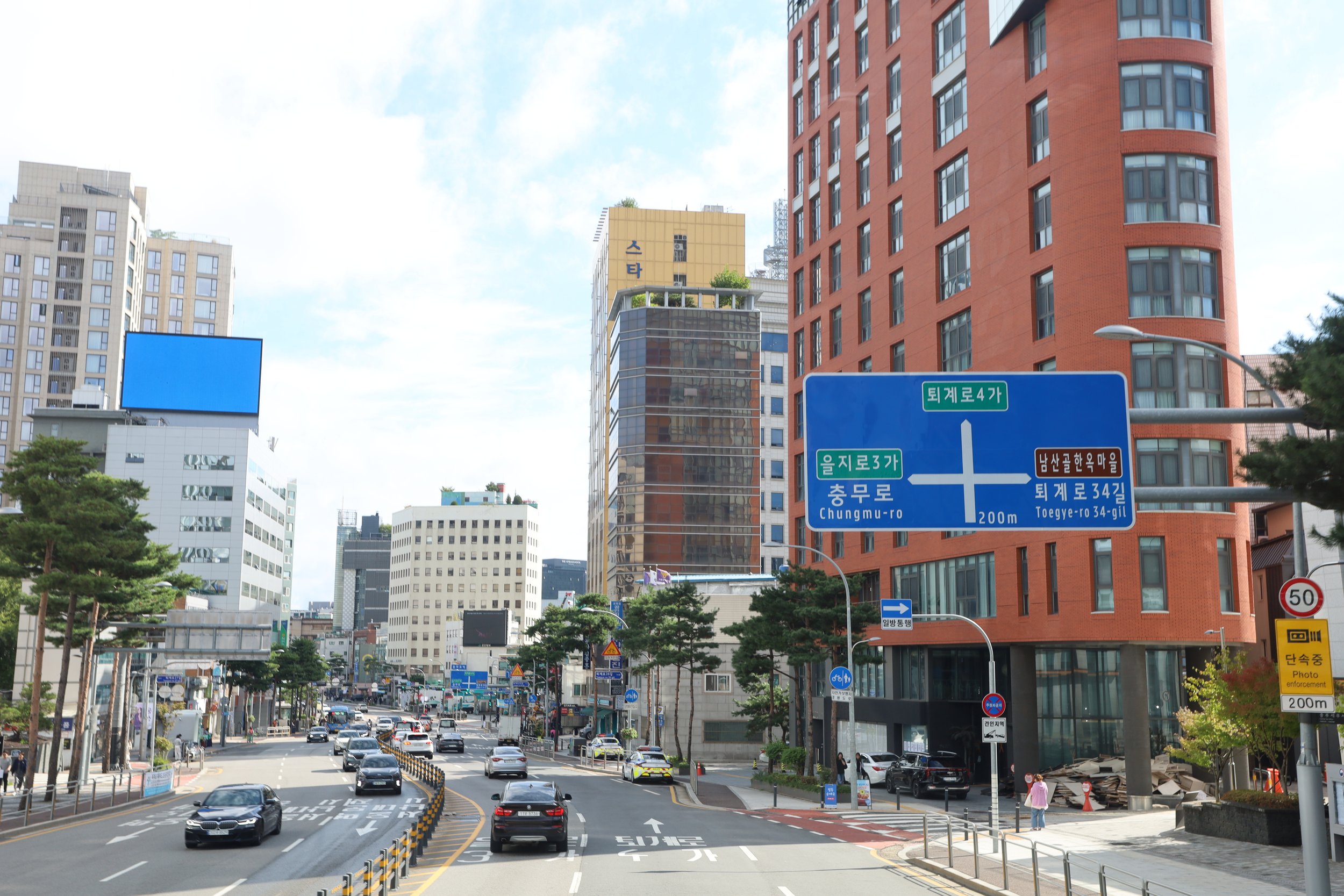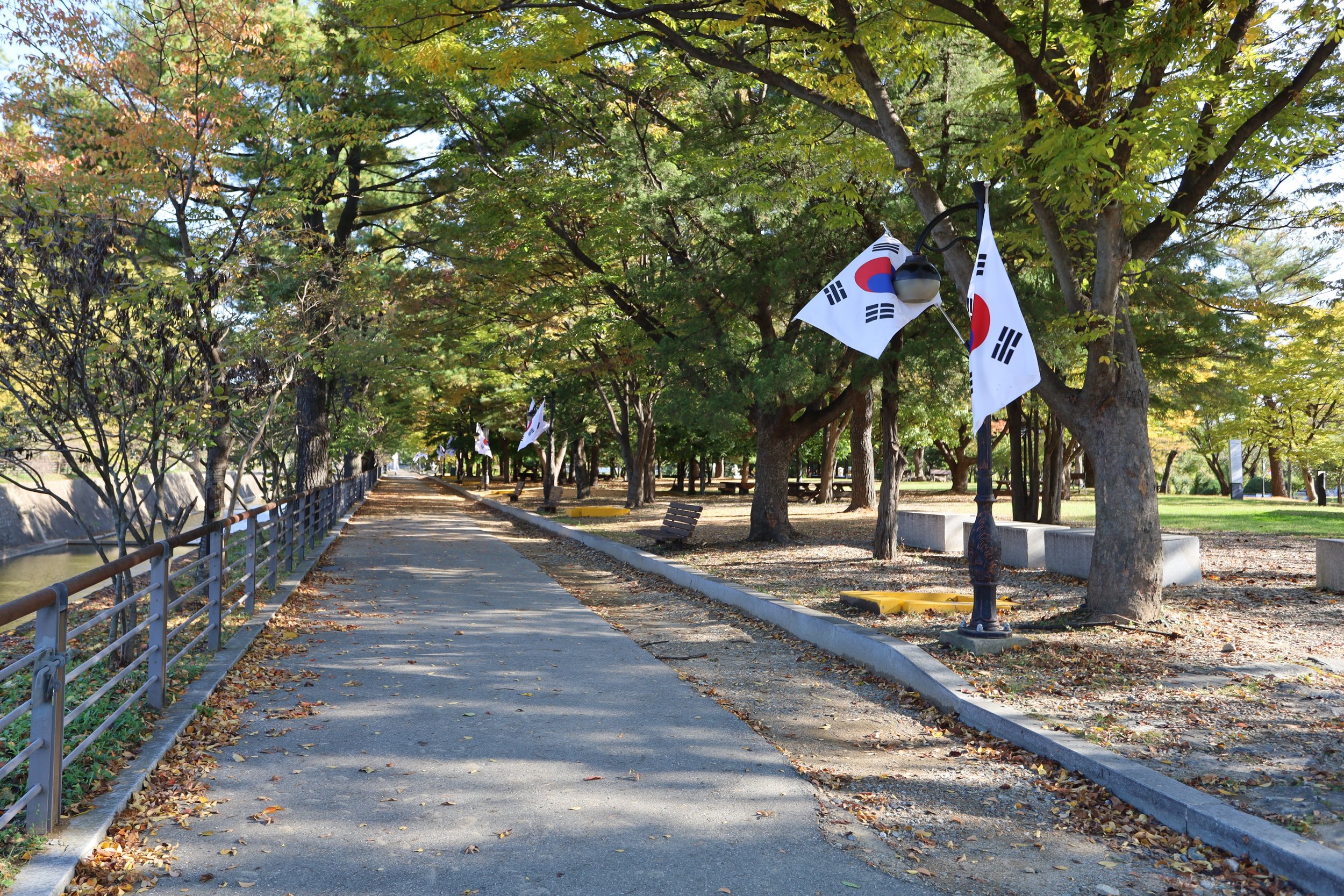Seoul, Korea (Part 1 of 3)
So this is what K-Power looks like
After a quick visit to Busan, we made our way to that epicenter of K-Power — Seoul. But K-drama started in the airport before we even reached the capital city.
As we found our seats on the plane and sat down, a young guy with Harry Potter glasses was stashing his shopping bags on the overhead bin when a package the size of a box of chocolates accidentally fell onto the head of the older guy sitting below.
One would have thought that he was branded with a red hot iron. He moaned, whined, complained and, for good measure, got up, stared down at the very apologetic Harry Potter, wagged his fingers and generally made everyone around him uncomfortable. He called one of the flight attendants, made a fuss and blustered some more. (And to think that N. put his carryon in the bin above this guy’s head. There but for the grace and all that.)
The drama must have been contagious because it was the most turbulent flight I remember since an Avianca flight 20 years ago.
By the time we deplaned, police officers were waiting for the two parties. They were escorted to the luggage belt, got their bags, and I saw the poor Harry Potter filing some paperwork because it appeared that the older man wanted to file charges. K-drama.
***
It was rainy when we landed in Seoul. It was rainy as we drove from Gimpo Airport. It was rainy when we arrived at our hotel. It was 3:30 pm and the only thing we had eaten had been the hotel’s free breakfast in the morning.
That’s my justification for how we ended up at our first Korean dive, more tent-like than restaurant, one of those places with low tables and even lower plastic stools — the kind of place depicted in many K-dramas where Koreans go to drink with a side of food, rather than eat with a drink or two. It seemed the place had gone viral recently, and so as soon as they opened at 4 pm, every table was bustling.
We ordered a dish of raw squid with lettuce, fish roe and vinegary gochujang sauce along with a jeongol of clams, and a seafood ramen — it was definitely the type of food that Koreans enjoy with alcohol, so we asked our server for a lesson. He was amused to learn we had never had so-mac (soju + beer) before, so he was happy to show us the right proportions, and even taught us a variation on the theme, with a cocktail of soju + beer + Coca Cola — a drink and dessert in one.
When N. got back to the hotel, he lay in the sofa and had to sleep off his new so-mac experience.
***
We had a quick kimbap breakfast around the corner — in Seoul, they advertise them as healthy versions with mixed grains instead of white rice — and headed to the subway station nearby. For convenience’s sake, the transit cards we had used in Busan also worked here.
I suppose that all the rhapsodizing about public transportation in Korea, based on our experience in Busan, can simply be multiplied four-fold in describing what the subway system in Seoul is like — modern, sleek, efficient, extensive.
We arrived at the Gwanghamun Station by the Seoul City Tour kiosk. First stop: Namsangol Hanok Village.
It was a touristy spot that naturally attracted a lot of foreign visitors who were, I’m guessing, fascinated by the novelty of a “traditional” Korean village — although the signs clearly noted that the five homes on the grounds were all uprooted from their neighborhoods and placed in this location — an architectural jjampong, if you will. Very Korean.
I’m guessing that for Westerners, the look of traditional Korean homes, what with their dark sloped clay roofs, the raised floors and rice paper wooden doors and windows offers some measure of the unusual. For me, it looked more like a disneyfied amusement park. It didn’t help that some visitors had rented Korean hanboks to wear and take photos in — all to upload on social media. I wonder what the locals think of the spectacle.
The next stop: Seoul Tower in Namsan.
The tourist bus did take us all the way to the top — something I felt grateful for (although I was jealous of the person riding a Brompton up the hills.) The mountaintop was crowded but for good reason: although it was cloudy, the panoramic view of Seoul below was impressive. So wide an expanse! So many buildings!
The biggest surprise was the fact that, in any direction one looked, there were mountain peaks poking everywhere on the horizon. For some strange reason, N. and I had always thought of Seoul as a flat expanse of land dotted only by peaking apartment complexes. Instead, just like in Busan, the landscape was dotted both by tall buildings and mountain peaks — although mountain is relative, isn’t it, considering we have just come back from Nepal.
In the vicinity of Namsan’s Seoul Tower were the usual universal touristy trappings: souvenirs, snacks, buy-a-lock-and-attach-to-a-chain-link-fence.
By the time lunch time rolled around, our little group decided that instead of hopping on the tourist bus, we should take the cable car down the mountain and have lunch in the Myeong-dong area.
After walking along the main street of Myeong-dong — a mad open-air zoo of stores, tourists and food vendors hawking everything from lobster tails to noodles to Oreo churros — our lunch was at Myeong-dong’s famous kalguksu place: quick bowls of wheat noodles in a beef broth, topped by ground beef and four small dumplings. All around the table agreed that the best part was the tasty kimchi.
We took the tourist bus again to Changgyeonggung Palace. I thought the grounds were prettier than the earlier artificially assembled hanok village, if only because it was probably a bit more authentic: the place had been turned into a zoo during the Japanese occupation, but at least the restoration was more historically accurate — the palace had been intended to house the wives and concubines of the emperor from the Joseon period.
***
N. headed to Seoul National Cemetery with the cousins’ husbands (although given the fact that it was my uncle buried there and not N.’s, my missing invitation was a mystery) .
While a few of our group headed to the train station and back home, we made our way to Seoul Sky in the Lotte Tower building which is, according to its marketing material, the world’s 6th tallest building at 123 floors and 555 meters.
The views from the top were… not great exactly (all those apartment buildings!), not beautiful exactly, not inspiring exactly. (Coming to think of it, not so different from that from Seoul Tower in Namsan.) More than anything, I think they elicited in me awe at human ingenuity and questions about why that ingenuity is not used more wisely.
***
The grounds of the National Museum of Korea were calm and serene — there was a lake with a typical Korean pagoda to welcome visitors and prepare them for the treasures inside. In order to reach the entrance, we walked up an impressive facade where an architectural cut-out framed the Seoul Tower in Namsan perfectly.
The museum obviously had a monumental task in covering Korean history, which spans thousands of years, multiple eras, several fields (historical, religious, daily life, etc). It was impossible to get an overview on one visit alone. Even when we joined a free introductory tour with an English-speaking guide, the more she spoke (so softly and haltingly that people peeled off mid-tour), the deeper one felt the superficiality of this 30-minute tour.
My favorite thing in the museum were not the artifacts but all the groups of schoolchildren on field trips.
My usual enthusiasm for museums seemed to have been left behind today, so we promised ourselves that we would return and left.
Lunch was a minari gomtang , a beefy soup green with floating water dropwort. It wasn’t until I saw the dish on the map app that something triggered in the deep recesses of my memory of some y-tube clip or other. The bowl of gomtang — with the rice already included — was covered in finely minced stems of minari; the leaves themselves they mixed with some slivered onions and a bit of lettuce and doused in a Korean-y dressing with soy sauce and gochugaru. The minari itself tasted very strong to me, but N. didn’t mind, and it was an interesting variation on the regular dish.
We took the subway to the Cheonggyechun Plaza and found ourselves in the shores of the stream by one of the most charming public programs of any city: the Seoul Outdoor Library. (Han Kang’s Nobel Prize in Literature probably had something to do with this.)
The city program set up foamy chairs along the steps of the Cheonggyechun stream, placed little tables and lamps next to them and, most importantly, boxes of books in Korean and English for anyone to read. Music was playing in the background and even wind chimes had been set up, that the afternoon breeze dangled every now and then. Combined with the sound of the running stream, it was a delightful scene.
***









































